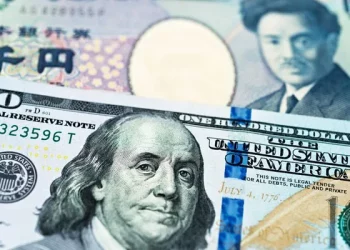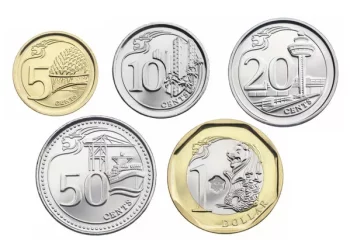The Japanese Yen (JPY) holds a pivotal position in the global financial landscape. As the official currency of Japan, the third-largest economy in the world, the Yen’s strength and stability are subjects of considerable importance. Understanding whether JPY is a strong currency involves examining various facets including its historical context, economic fundamentals, monetary policy, international role, and current market conditions.
Historical Context of the Japanese Yen
The Yen was introduced in 1871, replacing the Edo period’s complex monetary system. Initially pegged to the gold standard, it faced devaluation post-World War II, aligning itself with the U.S. Dollar under the Bretton Woods system. The 1971 Nixon Shock ended fixed exchange rates, leading to a floating JPY, which has fluctuated in value based on economic conditions and market perceptions.
Economic Fundamentals Underpinning the Yen
Japan’s economy, characterized by advanced industrial sectors and a high standard of living, provides a solid foundation for the Yen. Key factors influencing JPY’s strength include:
GDP and Economic Growth: Japan’s GDP growth has been moderate but stable, supported by strong manufacturing, technology, and export sectors.
Trade Balance: Japan often runs trade surpluses, driven by high demand for its automobiles, electronics, and machinery. A trade surplus generally supports currency strength.
Inflation and Deflation: Japan has battled deflation for decades, with low or negative inflation rates influencing monetary policy and economic sentiment.
Debt Levels: Japan’s public debt is among the highest in the world, exceeding 250% of GDP. Despite this, the debt is mostly domestically held, reducing the immediate risk of a currency crisis.
Monetary Policy and the Bank of Japan
The Bank of Japan (BOJ) plays a critical role in determining the Yen’s value through its monetary policy. Key aspects include:
Interest Rates: The BOJ has maintained ultra-low interest rates for years to combat deflation and stimulate economic growth. Low interest rates typically weaken a currency, but the Yen has shown resilience despite this policy.
Quantitative Easing: The BOJ’s extensive quantitative easing (QE) program, which involves large-scale asset purchases, aims to inject liquidity into the economy but can also dilute currency value.
Yield Curve Control: Introduced in 2016, this policy targets specific interest rates on government bonds to maintain economic stability, influencing JPY’s value indirectly.
International Role of the Yen
The Yen is a major global currency, being one of the top traded currencies in the foreign exchange market. Its international role is underscored by:
Reserve Currency Status: JPY is held as a reserve currency by central banks worldwide, enhancing its global standing and stability.
Safe Haven Currency: During times of global financial turmoil, investors often flock to the Yen, viewing it as a safe haven due to Japan’s political stability and robust financial system.
Current Market Conditions and JPY
The current strength of the Yen is influenced by a mix of domestic and international factors:
Exchange Rates: JPY’s value against other major currencies like the USD, EUR, and CNY reflects market sentiment and economic conditions. The USD/JPY pair, in particular, is closely watched as a barometer of global financial health.
Economic Indicators: Key indicators such as GDP growth, inflation rates, and employment figures provide insight into the Japanese economy’s health and its impact on JPY.
Geopolitical Factors: Regional tensions, global trade policies, and international relations can cause fluctuations in the Yen’s value. Japan’s strategic economic partnerships and trade agreements also play a role.
Comparative Analysis with Other Major Currencies
To assess the strength of the Yen, it is instructive to compare it with other major currencies:
USD (U.S. Dollar): The most dominant global currency, USD influences JPY through trade relations and economic policies. The USD/JPY exchange rate is a key metric.
EUR (Euro): As the second most traded currency, the Euro’s performance against the Yen reflects broader economic trends in the Eurozone versus Japan.
CNY (Chinese Yuan): Given China’s economic might and geographic proximity, the Yuan’s value against the Yen is critical, influenced by bilateral trade dynamics and regional economic policies.
Impact of Global Economic Trends
Global economic trends significantly impact JPY’s strength:
Globalization and Trade: Japan’s integrated role in global supply chains means that international trade policies, tariffs, and agreements directly affect JPY.
Technological Advancements: Japan’s leadership in technology and innovation supports economic growth, bolstering the Yen.
Demographic Changes: Japan’s aging population poses long-term economic challenges, influencing fiscal policy and potentially affecting JPY stability.
Future Outlook for JPY
Looking ahead, several factors will shape the future strength of the Yen:
Economic Recovery Post-COVID-19: Japan’s recovery trajectory from the pandemic, including government stimulus measures and economic reforms, will influence JPY.
Monetary Policy Adjustments: Potential shifts in BOJ policy, especially concerning interest rates and QE, will impact the currency.
Global Economic Environment: Ongoing developments in global markets, trade relations, and geopolitical stability will continue to play a crucial role.
Conclusion
The Japanese Yen remains a formidable currency, underpinned by Japan’s economic strength, strategic monetary policy, and significant international role. While it faces challenges such as high public debt and demographic shifts, its status as a safe haven and reserve currency, coupled with Japan’s robust industrial base, ensure its continued importance in the global financial system. Assessing JPY’s strength involves a nuanced understanding of these multifaceted elements, highlighting its resilience and the critical factors that will shape its future trajectory.
Related Topics:



























